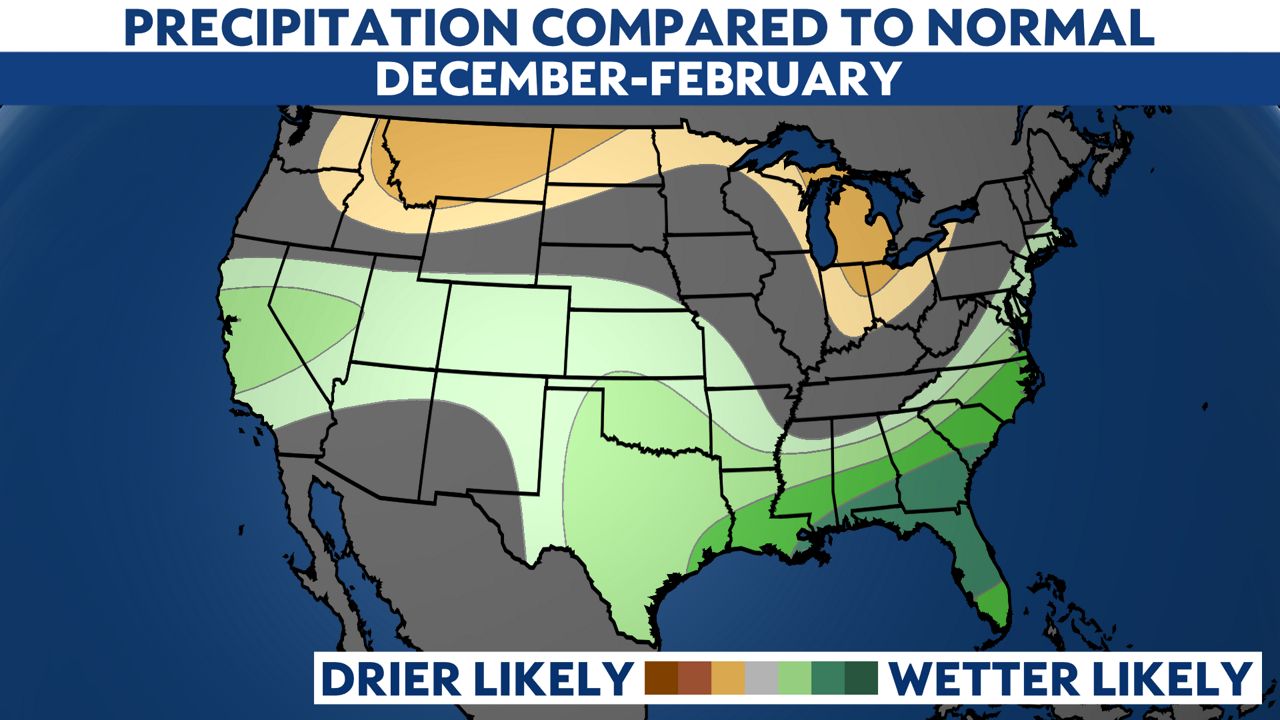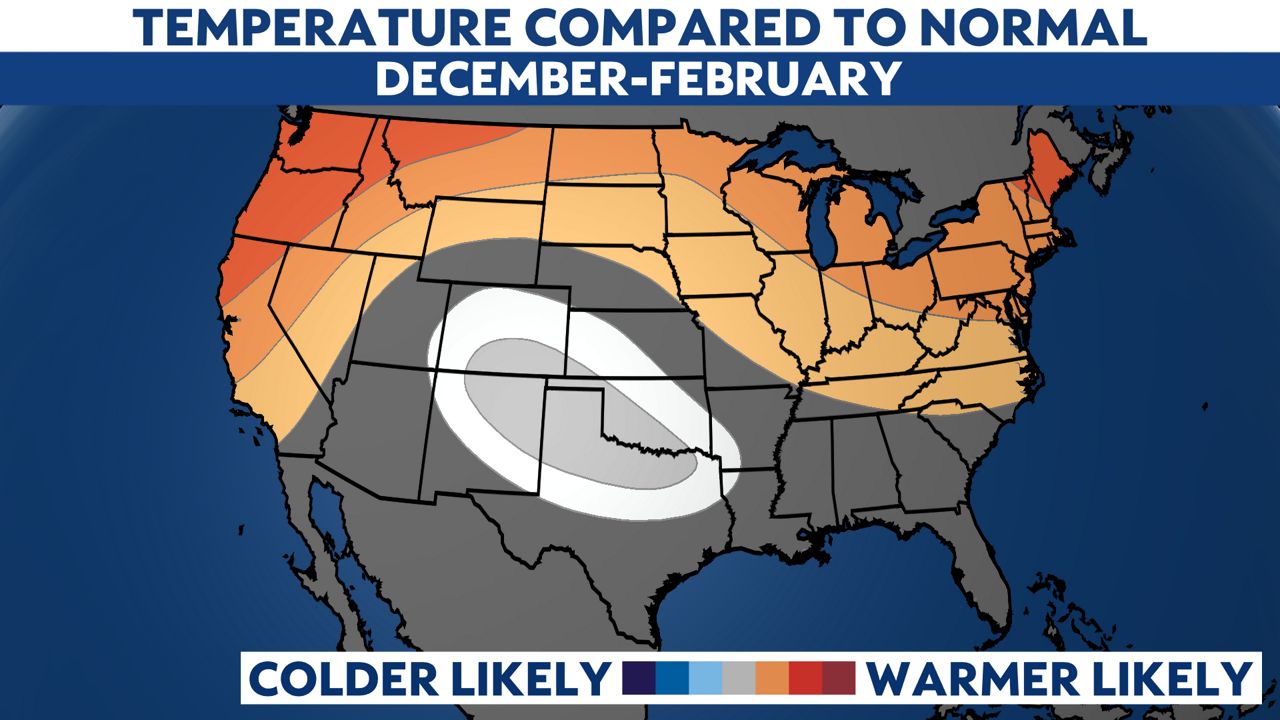NOAA’s Climate Prediction Center released its outlook for winter 2023-2024, and all signs point to El Niño driving the overall weather pattern.
A strong El Niño is forecast to continue this winter. That tends to bring relatively mild temperatures to the northern U.S. and wetter conditions to the West Coast and Southeast. The CPC’s forecasters expect this winter will probably follow suit.
It’s important to know that this outlook is a forecast of the odds of the broad average from December through February. The odds favoring a mild winter overall don’t mean no blasts of arctic air, for example, nor is a higher chance of a wetter than average season the same as a guarantee.
Keeping those caveats in mind, here’s what the CPC’s outlook has to say.
Temperatures
For temperatures, the odds lean toward this winter trending warmer than average across the northern U.S., especially the Pacific Northwest, Great Lakes and Northeast.
Elsewhere, they see temperatures probably staying close to normal in the Southern Plains and nearby areas to the west, with no strong temperature signal elsewhere.
Precipitation
On the precipitation side, chances are higher for a relatively wet winter over the southern U.S. through the Mid-Atlantic, with the Southeast especially favored. On the other hand, odds lean toward a drier winter in the Pacific Northwest, northern Rockies and Great Lakes.

Jon Gottschalck, chief of the CPC’s Operational Prediction Branch, says “there’s a tendency to get one or two large snowstorms” on the Eastern Seaboard during these patterns. Snowfall could become above average in coastal cities, but interior sections of the U.S. may end up lower thanks to milder air and a storm track that’s farther south.
He adds that one characteristic of El Niño is for more severe weather in Florida and the far Southeast during the winter.
CPC’s forecasters expect drought conditions to improve in the Southeast and Gulf Coast, as well as parts of the central U.S.
While the strong El Niño is the “predominant climate factor driving the outlook this year,” according to Gottschalck, shorter-term regional patterns like the Arctic Oscillation will still play a role.
NOAA issues its winter outlook each October. See how last year’s prediction panned out.
Our team of meteorologists dives deep into the science of weather and breaks down timely weather data and information. To view more weather and climate stories, check out our weather blogs section.

